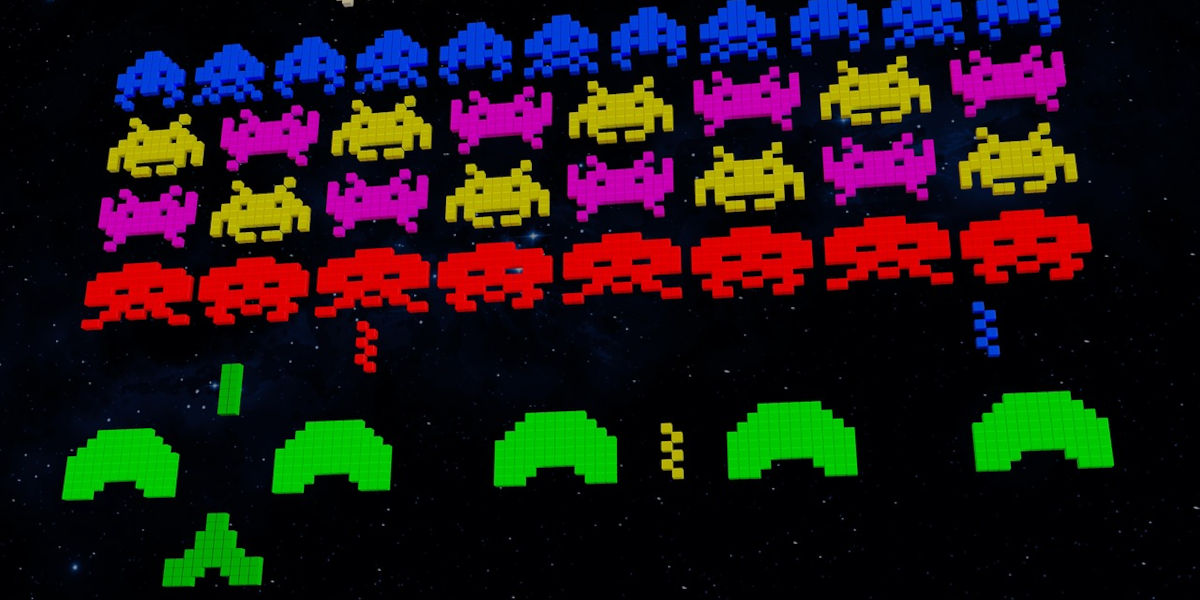Throwing it back to the vintage period isn’t just nostalgic in fashion or furniture design. Video gaming is also taking a turn, going back to the roots, and embracing the old-fashioned polygon graphics of the '80s and '90s. Join in this exciting journey as we delve into the colorful world of retro game development. Retro games have carved out a pretty large niche in the gaming world, and there's more potential and opportunities in creating retro style games than most people might think.
Retro Game Development Revival: A Trip Back in Time
Retro game development has seen a resurgence in recent years, with more and more game developers exploring this concept. Many developers are looking back, liking what they see, and asking themselves, "how to make a retro game?"
Developers are adopting these retro gaming elements for various reasons. For some, it's the chance to revisit games they grew up playing and sharing that experience with a new audience. For others, it's the distinctive challenge that retro game development offers, pushing the limits of gameplay and storytelling with minimal graphical resources.
Charm of Creating Retro Style Games
Creating retro style games is not all about having a simplistic design or a lower quality than modern video games. It's about recapturing the original gaming spirit. That thrill of successfully clearing a level of Mario or the engrossing stories in old text-based RPGs. It's about rekindling the spark that initially ignited many players' love for video games.
Moreover, the recent rapid technological advancements have led to a rather paradoxical outcome. While we have the capacity for more complex visual output and gaming mechanisms, a section of the gaming community finds comfort and charm in the simplicity and nostalgia elicited by retro style games. By channelling the nostalgic appeal and distinct playability of classic games, developers can truly tap into a rich, passionate market.
Unpacking the Basics: How to Make a Retro Game?
Creating a retro game may seem like a relatively straightforward task, but it's not as easy as it may appear on the surface. To craft a truly exceptional piece of retro gaming goodness, one needs to understand several important factors. These include technical considerations, visual artistry, sound design, and, most importantly, gameplay mechanics.
We're going to cover these fundamentals and get you started on your journey into the retro game development field. We'll offer practical tips, examples, and step-by-step approaches that can help you bring to life the retro game that you've always dreamed of making.
Unlocking Nostalgic Vibes with Retro Game Advancement
When we immerse ourselves in the present day high-definition gaming world, it is easy to forget the creative landscape from where everything began. Retro games, in spite of their rudimentary graphics and simplicity, are more than just relics from the past. They represent the fundamentals of game design and capture the essence of fun, challenge, and creativity.
For many developers and players alike, these retro games offer a strong sense of nostalgia and have an enduring charm that cannot be replicated by modern games. The fact stands firm and undisputable that these classic games laid the foundational framework for all the contemporary games that we enjoy, value and are obsessed with today. It is this ever-pervading allure of the bygone era that incites developers to create retro-style games in the present era.
Why Retro Game Development?
Creating retro games is an exciting ideation not just because it rekindles old memories but also because it imbibes critical techno-creative skills such as constraint-based design, abstract thinking, and resource optimization. It's surprising how much one can do with so little. Moreover, going retro could be an excellent strategy for new game developers considering the smaller scope, lower art costs, and shorter development cycles associated with retro games.
In spite of having fewer resources and technological support, the developers of the yesteryears brought about game-changing and revolutionary ideas. Isn’t there anything more inspiring than this to apply these carefully nurtured skills to the present game development scenario?
The Principles of Retro Game Development
Although technology has made incredible progress, and we now have sophisticated game engines to create stunningly realistic gaming environments, the principles of good game development remain the same. It's all about engaging gameplay, intriguing storylines, interesting characters, and intuitive controls.
Ideal development of a retro game includes a focus on core gameplay mechanics. In simpler words, creating an interesting and fun-to-play game should supersede the worry of integrating state of the art graphics or narrative storytelling. The gamers of today have an appetite for a challenging and immersive game experience and retro games can satiate it effectively, in some cases, even better than the modern games.
The Craft of Retro Game Design
Designing a retro game demands an amalgamation of artistry and meticulous coding. The pixelated art might look simple, but it requires a delicate balance of color choice and placement to bring the characters and environments to life.
Similarly, implementing game mechanics without the assistance of modern game engines needs proficient coding skills. Both these aspects contribute to cultivating a better understanding and appreciation for the process of game design and continue to be relevant in the current context of high-definition gaming reality.
Conclusion
Embracing the past is not about shunning the future. It’s about a healthy reverence for the roots, a celebration of the evolutionary journey, and more importantly, a vibrant platform to learn and grow. With this Retro Game Development Handbook, dive into the fascinating world of retro games, awaken your creative spirits, and contribute your own unique hues to the wide spectrum of game development!




